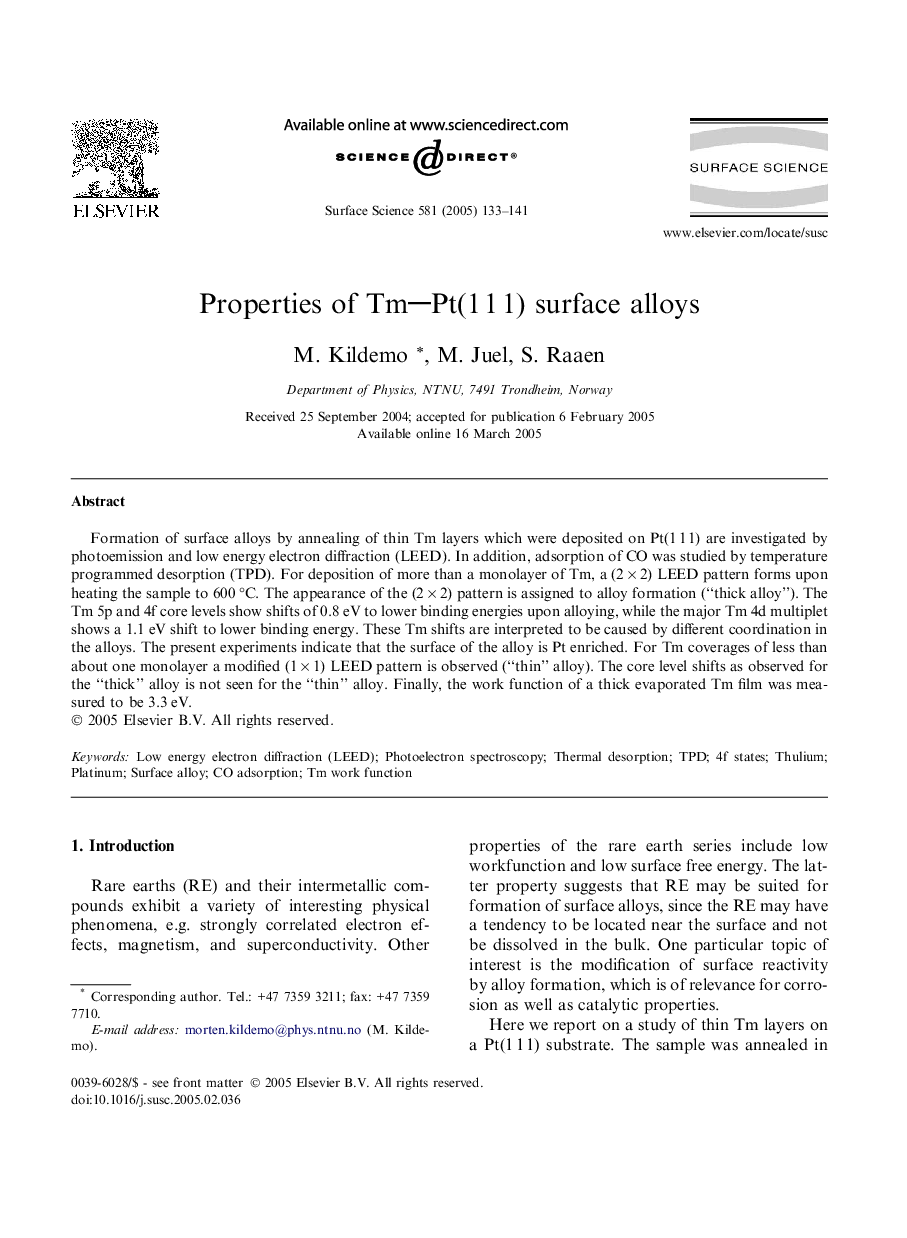| Article ID | Journal | Published Year | Pages | File Type |
|---|---|---|---|---|
| 9594935 | Surface Science | 2005 | 9 Pages |
Abstract
Formation of surface alloys by annealing of thin Tm layers which were deposited on Pt(1 1 1) are investigated by photoemission and low energy electron diffraction (LEED). In addition, adsorption of CO was studied by temperature programmed desorption (TPD). For deposition of more than a monolayer of Tm, a (2 Ã 2) LEED pattern forms upon heating the sample to 600 °C. The appearance of the (2 Ã 2) pattern is assigned to alloy formation (“thick alloy”). The Tm 5p and 4f core levels show shifts of 0.8 eV to lower binding energies upon alloying, while the major Tm 4d multiplet shows a 1.1 eV shift to lower binding energy. These Tm shifts are interpreted to be caused by different coordination in the alloys. The present experiments indicate that the surface of the alloy is Pt enriched. For Tm coverages of less than about one monolayer a modified (1 Ã 1) LEED pattern is observed (“thin” alloy). The core level shifts as observed for the “thick” alloy is not seen for the “thin” alloy. Finally, the work function of a thick evaporated Tm film was measured to be 3.3 eV.
Keywords
Related Topics
Physical Sciences and Engineering
Chemistry
Physical and Theoretical Chemistry
Authors
M. Kildemo, M. Juel, S. Raaen,
